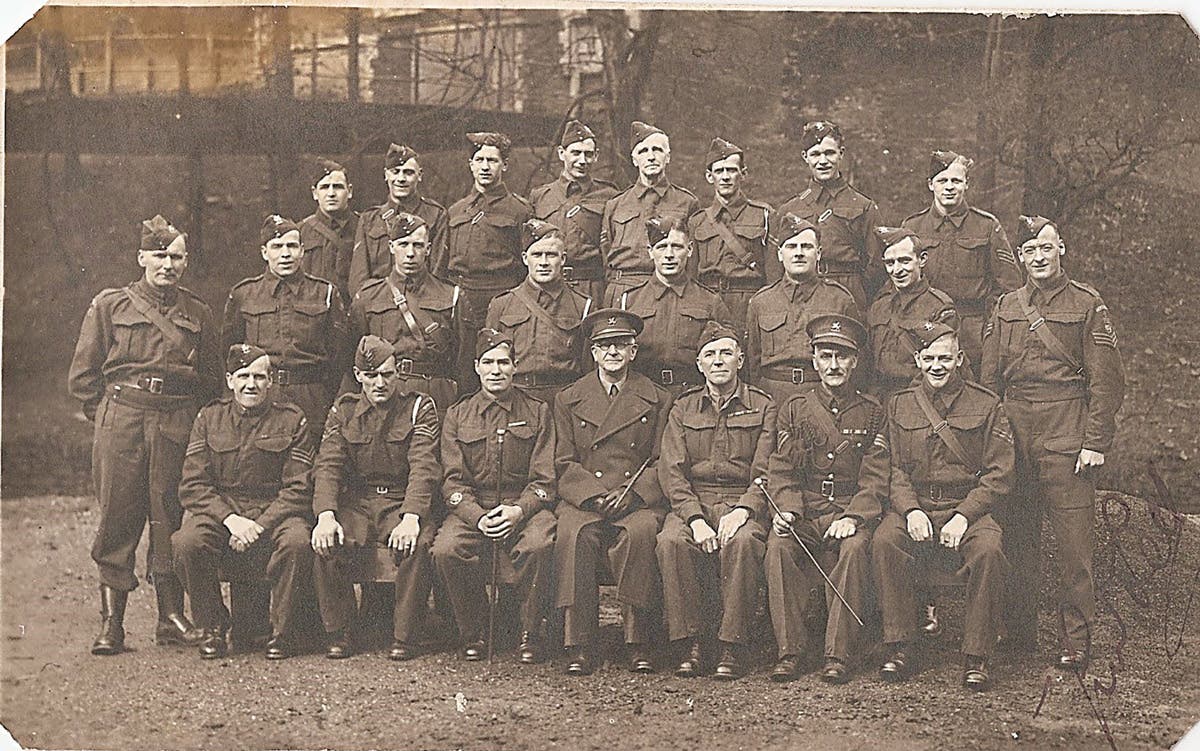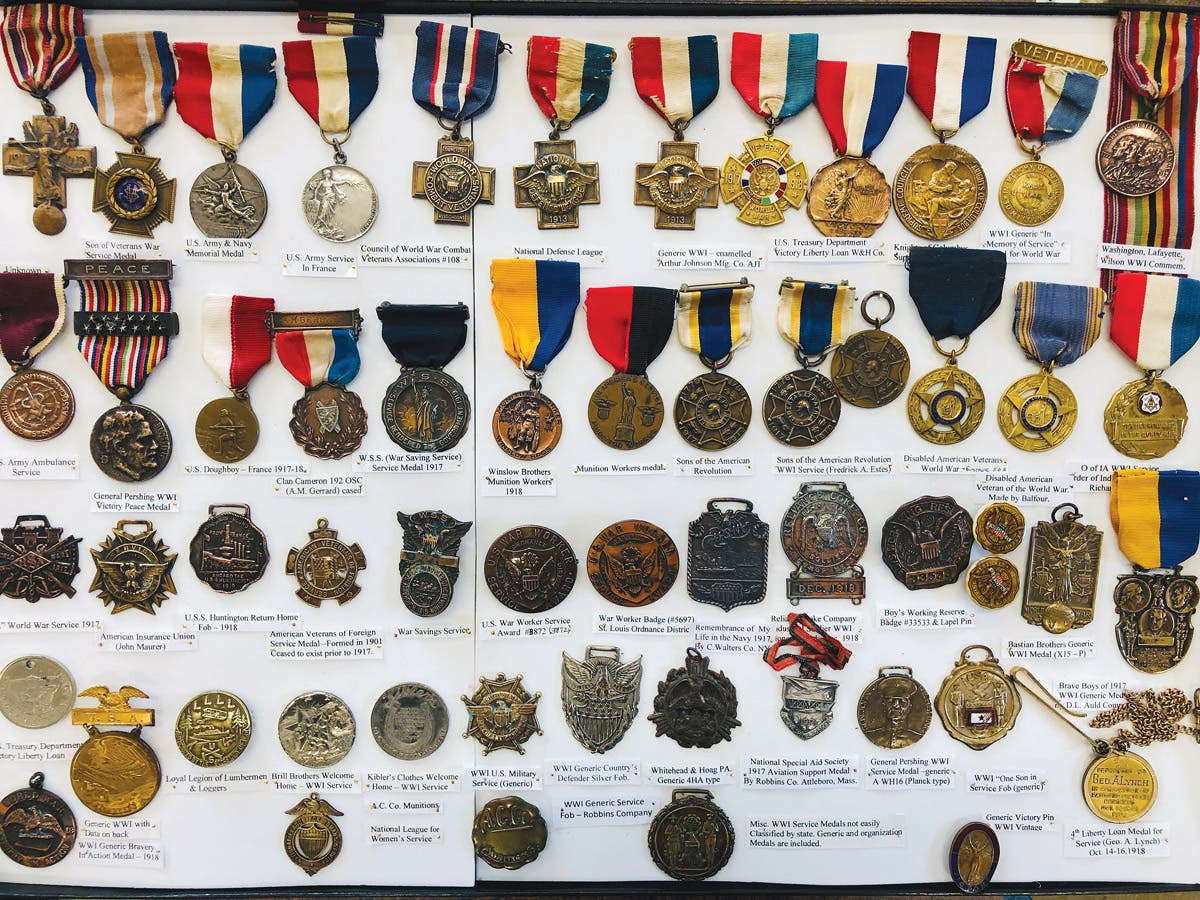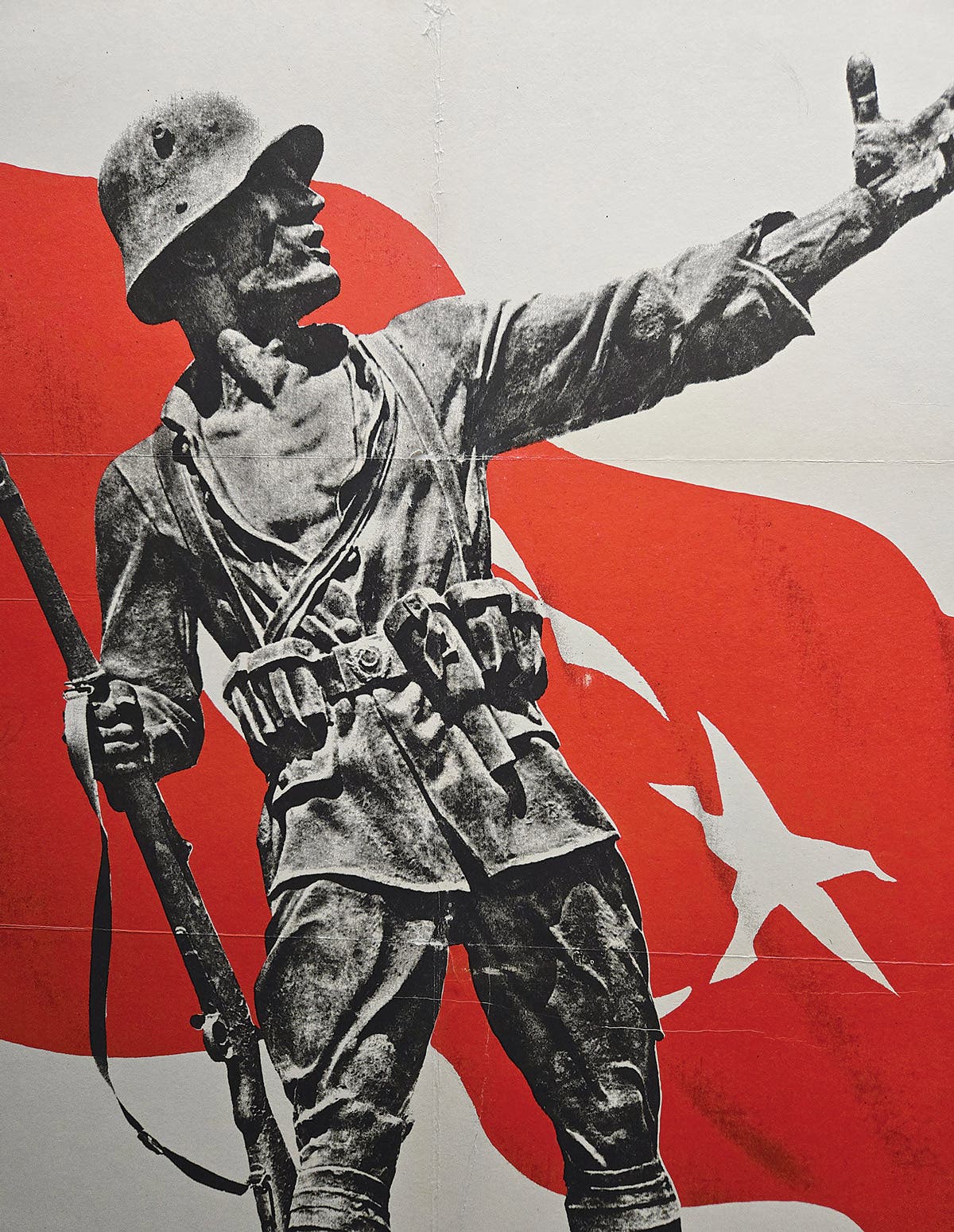Made in Birmingham: How British-made firearms equipped the American Civil War
One of the most important firearms of the 19th century, the Pattern 1853 Enfield rifled musket saw service in just about every Victorian British conflict from the Crimean War to the Boxer Rebellion. It made it way overseas in the American Civil War.
In 1853, Jefferson Davis, then Secretary of War to the United States government, directed that the U.S. Army should quickly adopt muzzle-loading percussion cap rifles instead of smoothbore muskets. Such a policy was wise, and it ensured that when the Civil War broke out in 1861, the Union had a ready supply and manufacturing base for the Springfield .58-caliber rifled musket.
When Major Josiah Gorgas was appointed Chief of Ordnance of the Confederate States Army in 1861, he found the nation’s arsenals contained just 15,000 rifled muskets and 120,000 old smoothbores. To equip its new army with modern weapons, the Confederacy would have to buy from abroad. By far the biggest European power willing to run the “Yankee” blockade was Great Britain.
From workshops based in London and Birmingham, England dominated the global gun trade, distributing British weapons throughout its empire and beyond using its huge merchant navy. And while anti-slavery Britain would never actively intervene in the war, it was willing to sell guns to both sides — especially favoring the CSA.
The Arm of the CSA: Enfield Pattern 1853 rifle-musket
One of the most important firearms of the 19th century, the Pattern 1853 Enfield rifled musket saw service in just about every Victorian British conflict from the Crimean War to the Boxer Rebellion. Indeed, the weapon was so prevalent that even during NATO intervention in Afghanistan in the 2000s, American servicemen encountered the P53. Wielded by Afghan tribesmen, the 150-year-old rifles were still well cared for (and in some cases, still in use!).
Introduced at a time when rifle production was making huge technological leaps forward, the P53 was essentially a better-engineered version of the French Minie Rifle, using the same firing system and large caliber, easily deformed conical lead bullets.
In November 1861, Congress authorized the Ordnance Department to purchase 25,000 “English long Enfield rifles” at $20 per gun. They were to be delivered to New York in batches over the course of the following seven months, and would only be passed fit for use after being inspected by a Major Peter Valentine Hagner.
One incident is worth mentioning to illustrate the complicated and controversial supply lines that armed the Confederacy. In 1861, Colt received a contract to supply the Union with rifled muskets. To that end, the company purchased a large consignment of 40-inch variant P53 barrels from England, marking each one with a diamond C at the breech. However, the US Ordnance Department refused to pass the barrels as fit for service. Unwilling to lose out, Colt sold the barrels back to Britain, and the British quickly found a new buyer: the Confederate Army.
American import P53s did suffer from defects. The Royal Small Arms Factory at Enfield could not produce enough Grade 1 P53s to equip the British Army, let alone keep up with American demand, so many Civil War Enfields were made by private gunsmiths working under government contracts. Several were based in the city of Birmingham, where the gun industry had been thriving since the 1630s. This meant that very few Civil War P53s had the broad arrow acceptance stamp of the British Army.
Nevertheless, these lower-grade weapons were still devastatingly effective. By the Battle of Gettysburg in July 1863, 85% of Lee’s Army of Northern Virginia carried a rifled musket — the vast majority being Enfields. By the end of the war, as many as 900,000 P53s had been imported into America.
The Enfield proved a very adaptable weapon for both sides as it could fire the .58-caliber ammunition that was standard for the main Union firearm, the Model 1861 Springfield.
There has been a long-running debate about which rifle was better. While the Springfield had interchangeable parts, which meant repairs could be done more easily, both weapons performed similarly on the battlefield. After the fall of Vicksburg in 1863, General Grant felt the Confederate Enfields were good enough to approve the reissue of them for his own troops. By far the greatest factor affecting the accuracy of either the Springfield or the P53 was the man behind the rifle.
Buying a good-quality P53 these days with provenance linking it to the Confederacy from an auction house will generally set the buyer back $1,500 to $3,000. If you have a sound working knowledge of period firearms, you may wish to buy privately, where prices will often be cheaper. The P53 is easy to recognize because of its three metal bands fastening the barrel to the stock. Because of this, it is sometimes referred to as a “three-band” rifle. Confederate P53s usually have various inspection marks to help with identification, whereas Union imports will have limited markings.
The P53 is especially popular with Civil War reenactors, as the rifle was used by troops North and South. To avoid damaging a historical item, reenactors should opt for replica weapons.
Outdated but Lethal: Brown Bess
The Brown Bess musket had been the workhorse of the British Army for over 100 years prior to 1861. First introduced in 1722 as the Long Land Pattern musket, the original weapon had an overall length of 62.5 inches and weighed more than 10 pounds. With a .75-caliber barrel, the weapon was heavy and unwieldy, but packed a fearsome punch.
Before 1722, each British Army regiment was responsible for procuring its own arms. This would lead to severe problems for gunsmiths, as multiple different weapons were in use, most with differing calibers of shot. With the introduction of the Brown Bess, regimental gunsmiths worked from a single, standardized pattern, allowing for the easy production of ammunition.
Though the barrel was bored to .75, very often a .71 ball would be used to cut down on powder fouling. The Bess was originally a flintlock musket, meaning it was unreliable, especially in bad weather. It was only in 1839 that many were upgraded with percussion caps. Thousands of Model 1839 Brown Besses were lost in a fire in the Tower of London, meaning that during the Civil War, most Brown Besses that found their way to America were the 1842 percussion cap models.
During the Civil War, the Brown Bess was wielded almost exclusively by Confederate soldiers, especially those on garrison duties or in operational theaters deemed less crucial to the war effort. As the war progressed and the need for manpower became ever more pressing, regiments slated for garrison duty would be ordered to more active fronts. One such case is the 17th South Carolina who were initially guarding the coast and had all eight of their center companies armed with the Bess, with only the more experienced men on the flanks given the P53. Soon after being formed, they were moved into the Army of Northern Virginia and saw action at Antietam (Sharpsburg). After this, they became part of the garrison of Fort Sumter, before again being moved into the ANV to defend Richmond. By the end of the war, the regiment had been so reduced that only nine officers and 110 men surrendered in April 1865.
In the 1860s, the Brown Bess’ short range meant it was completely outclassed by modern rifles. But at 50 yards (or less), the inaccurate weapon could prove devastating in massed volleys. Its smoothbore design meant it could be loaded with deadly “buck and ball” shot (usually a musket ball combined with three smaller pieces of buckshot). This essentially turned the musket into a powerful shotgun.
Percussion-converted Brown Besses can be picked up for around $500, though finding one with provenance linking it to the Confederacy will be challenging. Few 1842 models were made compared to earlier models. Many Besses were converted to percussion by the British East India Company for trade in Asia and Africa, so any with EIC markings are unlikely to have been used in America.
Unmatched Accuracy: The Whitworth Rifle
Sir Joseph Whitworth was among the most capable toolmakers in Victorian England. Hand-fitting problems plagued the early versions of the new P53s, so the Royal Small Arms factory appealed to Sir Joseph to invent a mechanism that would speed up and standardize production.
But when he examined the new rifle, he realized he could make something far better. The design that followed proved one of the most accurate and unusual rifles of the century.
Completed in 1859, the rifle was 0.451-caliber with a hexagonal barrel firing distinctive long hexagonal bullets. It was accurate to 1,000 yards, three times the effective range of the P53. The rifle’s pinpoint accuracy and telescopic sight attachment made it the first modern sniper rifle. Queen Victoria test-fired the new Whitworth on Wimbledon Common during the first meeting of the British National Rifle Association. By pulling a cord to fire a pre-sighted Whitworth, she struck within one inch of the bullseye at 400 yards.
Despite this success, the Whitworth was ultimately rejected by the Army, which believed it was too expensive and fragile. This meant only 13,400 Whitworths were ever produced, many finding their way to America.
Men in the CSA armies designated as sharpshooters carried a mix of weapons, including P53s and captured Union rifles, as well as personally owned guns. The Confederacy wisely bought consignments of Whitwoorths, handing them out to the finest marksmen within regiments.
The two most notable incidents involving the Whitworth both involved the sniping of Union generals. General William Lyttle was killed at Chickamauga on September 20, 1863, by a group of Confederate Whitworth-armed riflemen operating as sharpshooters.
At Spotsylvania the following year, General John Sedgwick — a man who always displayed incredible coolness under fire — berated his men for hiding in a ditch to avoid Confederate sniper fire, saying: “What? Men dodging this way for single bullets? What will you do when they open fire along the whole line? I am ashamed of you. I’m ashamed of you, dodging that way. They couldn’t hit an elephant at this distance.”
A few moments later, Sedgwick was hit just under the left eye by a Whitworth bullet, causing him to fall dead.
Collecting the Whitworth rifle today will require deep pockets. The gun cost an inordinate amount to import into the Confederacy and, as so few were made, picking up an original in good condition with provenance can set the buyer back tens of thousands of dollars.
A replica Whitworth will be far easier to find and not leave such a hole in your wallet. If you fancy yourself a sharpshooter, taking a replica Whitworth into a reenactment battle is a far safer bet than bringing along an item of such rarity and historical value.
For the Cavalry: Pattern 1861 Enfield musketoon
The Pattern 1861 Enfield musketoon was essentially a cut-down version of the P53. Also produced at the Royal Small Arms factory, the musketoon was only manufactured from 1861 to 1864. Nevertheless, many found their way into the Confederacy.
Accuracy was not compromised due to the fact the barrel had five grooves as opposed to the three in the P53. And like the P53, it accepted the .577 Minie ammunition that was widely used by the CSA.
The musketoon had a maximum lethal range of 500 yards, but performed much better at shorter ranges, meaning it was best employed with cavalry and artillery units. A cavalryman required a short-barrel carbine-style weapon due to the nature of firing from horseback. Artillerymen would only use a rifle if they were in danger of being overrun, operating their cannons until the last possible moment. Quicker to load and weighing much less than the P53, the musketoon with its limited range was ideal in emergency situations.
For the modern collector, an original Enfield musketoon with Confederate markings can set you back around $2,500. Firing replicas can be bought for around $500, and non-firing replicas around $250.
The British Colt: The Adams Revolver
When the first Colt Revolver came out in 1836, it revolutionized personal firepower. No longer was a pistol limited to discharging one round at a time prior to reloading. Though not the first ever revolving pistol, the reliability of the Colt ensured its success and mass production, so that by the 1850s, Colt dominated the pistol market, even opening a factory in London.
British prestige could never accept this situation forever, so in 1851 when Colt’s English patents expired, British gunsmith Robert Adams quickly designed and built the Adams Revolver, showcasing it the same year. An innovative double-action design meant that firing a round also cocked the mechanism, allowing for rapid fire of its five black powder cartridges. With a caliber of .50, Adams declared that his gun had a far greater stopping power than the .36 Colt Navy model.
J.G. Crosse of the British Connaught Rangers wrote to Adams after the bloody Battle of Inkerman during the Crimean War: “by some chance [I] got surrounded by Russians. I then found the advantages of your pistol over Colonel Colt’s, for had I to cock before each shot I should have lost my life. I should not have had time to cock, as they were too close to me… so close that I was bayoneted through the thigh immediately after shooting the fourth man.”
However, it Adams significant drawbacks. The trigger was extremely hard to squeeze, meaning accuracy was compromised at anything except point-blank range. No recoil shield meant that the firer’s hand would sometimes be burned by black powder “blowback”. A design flaw also meant the gun could burst during excessive firing. And it proved more expensive to produce than the Colts. However, burnt hands and hopeless inaccuracy were not about to put off the British military establishment. The Adams was a British gun invented by an Englishman and proudly made in Britain by British workers, and that was enough to ensure its widespread adoption. Thankfully for the end user, the Adams received significant design improvements in 1856 that fixed many of these earlier issues. Known from then on as the Beaumont-Adams Revolver, it was these guns that ended up in America during the Civil War.
Immediately after the attack on Fort Sumter, Jefferson Davis sent Major Caleb Huse as a special representative to England to purchase as many revolvers as he could. The majority of these revolver purchases were the Beaumont Adams, with the London Armoury Company becoming the chief supplier to the Confederacy. Revolvers were usually placed in the hands of cavalrymen, who required a close-range, quick-firing weapon.
Before the war, the Massachusetts Arms Company had been licensed to make 19,000 units of the revolver in .36 caliber, though only 1,750 of these were purchased directly by the Union in 1861. Because of their relative scarcity, they can be very expensive compared with the more widely used Colt revolvers. One Massachusetts revolver with provenance recently sold for almost $4000. Any Adams revolvers that are bored to .44 or .50 caliber will have been purchased directly from England. A Beumont-Adams with provenance and still in its original case recently went for close to $10,000.
Final Thoughts
A Confederate victory in the Civil War was always unlikely given the huge disparity in population size between the southern and northern states. The war only dragged on for four years because Britain and her arms industry effectively supplied the Confederacy with modern firearms.
Anyone who collects Civil War weaponry is doing crucial historical preservation work for future generations. If you are interested in the subject, check out the Canadian YouTube channel britishmuzzleloaders, where most of the weapons discussed in this article are examined and fired. Another great resource is the British based Victorian Military Society.
Love stories on firearms? Here are a few more articles for your reading enjoyment.
Matthew Doherty








